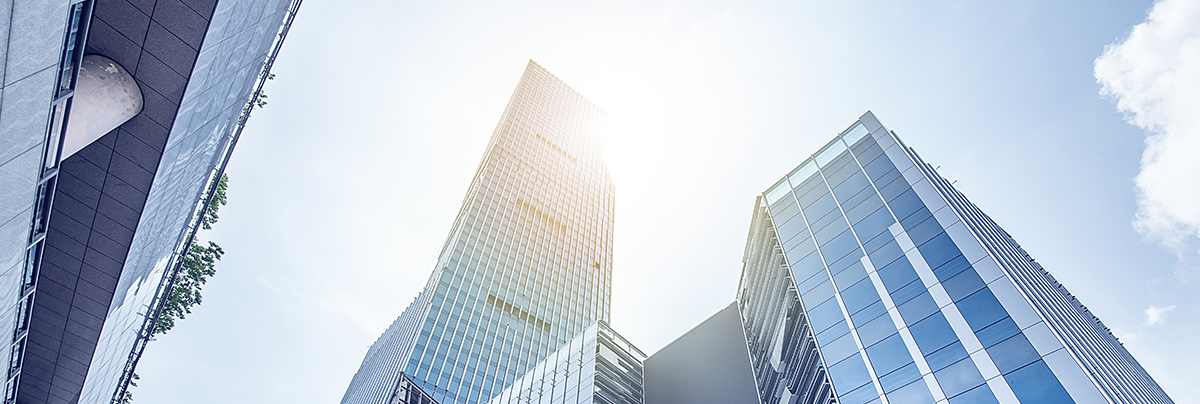The Facility Manager’s Guide to Sustainability

The effort to conserve our planet's natural resources has become a massive part of our lives, especially regarding facility management. There is an influx of buildings striving for or have accomplished green building status via certifications like LEED® (Leadership in Energy & Environmental Design). With increasing awareness of the benefits of going green, over 100,000 LEED-certified buildings are now representing 11 billion square feet of space in 180 countries1.
Whether you are on the journey to a green building certification or looking to integrate more sustainable building maintenance practices into your routine, this Envoy Solutions' sustainability guide is meant to help you foster a cleaner, healthier, greener, and safer building for re-entry and beyond:
Establish a Healthy & Sustainable Foundation with Green Chemistry
An efficient way to launch your sustainable building program is by switching to cleaning chemicals that put both your building occupants and the environment first. Green cleaning chemicals are third-party certified by industry-recognized ecolabels. These ecolabels give chemicals the proverbial 'stamp of approval' after being verified against criteria related to the decreased impact on human health and the environment. Some examples of decreased human health impacts include no skin sensitizers and reproductive toxins. Some examples of decreased environmental impacts include no aquatic toxicity and reduced product packaging.
Incorporate Green Cleaning Tools, Equipment & Technology
Utilizing cleaning tools that conserve resources takes your sustainable cleaning routine to the next level. Choosing the right tech, such as microfiber products and third-party certified equipment, can help your LEED project and improve indoor air quality (IAQ).
Microfiber technology effectively captures dust, dirt, and allergens preventing them from being released into the air. Their durable design can be reused hundreds of times, which helps conserve resources and provides a more sustainable option to single-use disposable products.
Equipment can be third-party certified through programs like the Carpet and Rug Institute (CRI) Seal of Approval. For tools and equipment not covered under third-party certification standards, there are sustainable practices you can integrate, such as using cleaning processes that help to conserve water, using products that are made with post-consumer recycled content, and using products that contribute to source reduction, among others.
Plan an Efficient Waste Diversion & Recycling Program
As part of your waste diversion and recycling strategy, consider federal and municipal regulations to pinpoint materials you can recycle, determine what kind of receptacles are needed (basic vs. decorative, indoor vs. outdoor, etc.), and how to prioritize your waste management steps with the waste reduction hierarchy.
Reducing waste in your facility through waste management and recycling is critical to achieving building certification standards, including projects pursuing LEED® certification, AASHE STARS® rating, CIMS-GB certification, or TRUE certification.
Use Entryway Matting to Improve IAQ and Earn LEED Points
A small yet mighty detail that contributes to sustainability and overall cleanliness in a facility is right under your feet as soon as you enter the building, entryway matting.
Whether using a scraper mat, wiper mat, or a combination, entryway matting provides that first line of defense, preventing larger contaminants from being tracked on the floors and smaller contaminants from being kicked into the air. Mats are crucial to sustaining a clean environment.
There are also eco-friendly mats, such as our regional company WAXIE Sanitary Supply's WAXIE-Green Eco-Mats, made from post-consumer P.E.T. plastic, which prevents bottles from entering landfills and preserves our natural resources.
Cut Down Facility Maintenance Costs with Energy and Water Conservation
Commercial buildings have high energy needs that strain the nation's power grids during peak periods and can be extremely costly. Switching to more energy-efficient alternatives, such as LED lighting, and more water-efficient options, such as low-flow faucets and flushers, can dramatically reduce energy and water consumption.
Another way to conserve energy is to switch your primary cleaning operations from the night and evenings to daytime cleaning, thereby conserving the energy that would have been used to power the building in the evenings.
Keep Building Occupant Wellness Top of Mind
When a building is healthy, it makes it easier for its occupants to be healthy too!
Indoor air quality (IAQ), lighting, and hand hygiene are significant contributors to the well-being of building occupants. Maintaining good IAQ minimizes airborne pollutants, reducing the risk of absenteeism and poor performance in school or the workplace.
Incorporating high-quality lighting in a facility fosters an environment for your building occupants to be comfortable and accurately perceive their surroundings. This leads to reduced stress, increased focus, and higher productivity levels.
Finally, proper hand hygiene is one of the most effective methods to promote wellness and combat the spread of germs. Frequently cleaning and disinfecting high-touch surfaces and using signage to encourage hand washing dramatically improves the overall cleanliness and health of a facility and those that use it.
Ensure a Green Future with Ongoing Environmental Stewardship
To wrap up, we highlight the interconnectedness of environmental stewardship and facility management.
Your ongoing effort to achieve these goals communicates to your stakeholders and community your commitment to improving the well-being of your building occupants and the environment. This can be achieved through pursuing green building certifications such as LEED.
LEED-certified buildings ultimately cost less to run and utilize less energy and water while lowering environmental impact through reduced waste. You can obtain additional notable certifications to keep you on the path toward a greener and healthier future for your building. Certifications such as:
1. LEED Hits 100,000 Certified Projects

